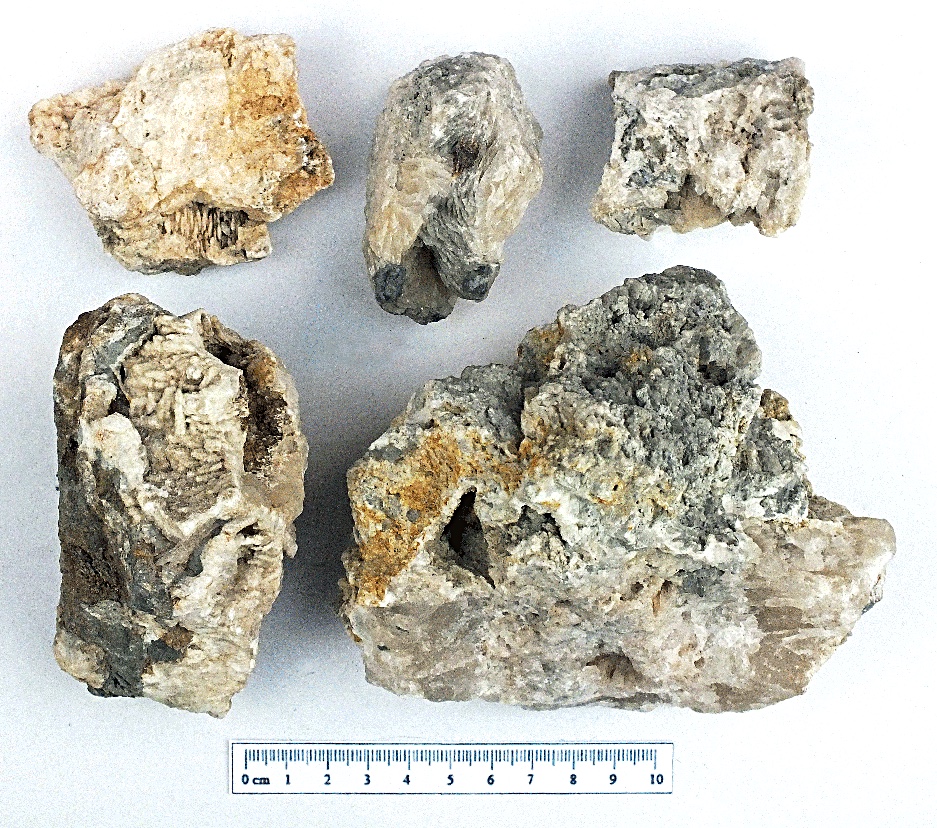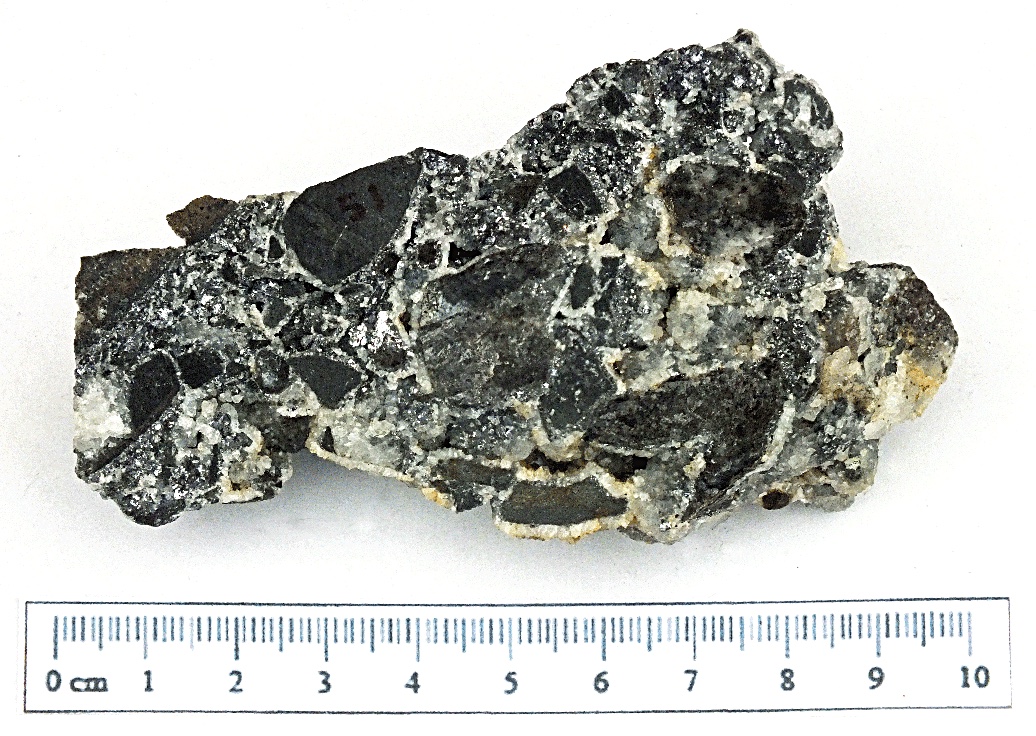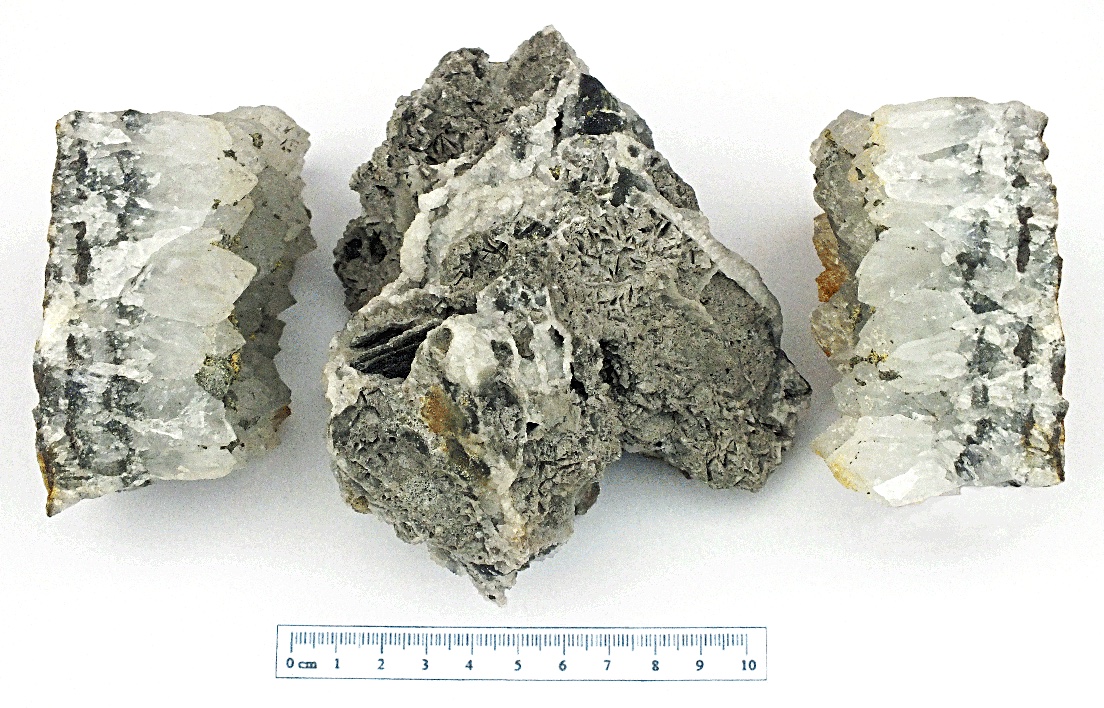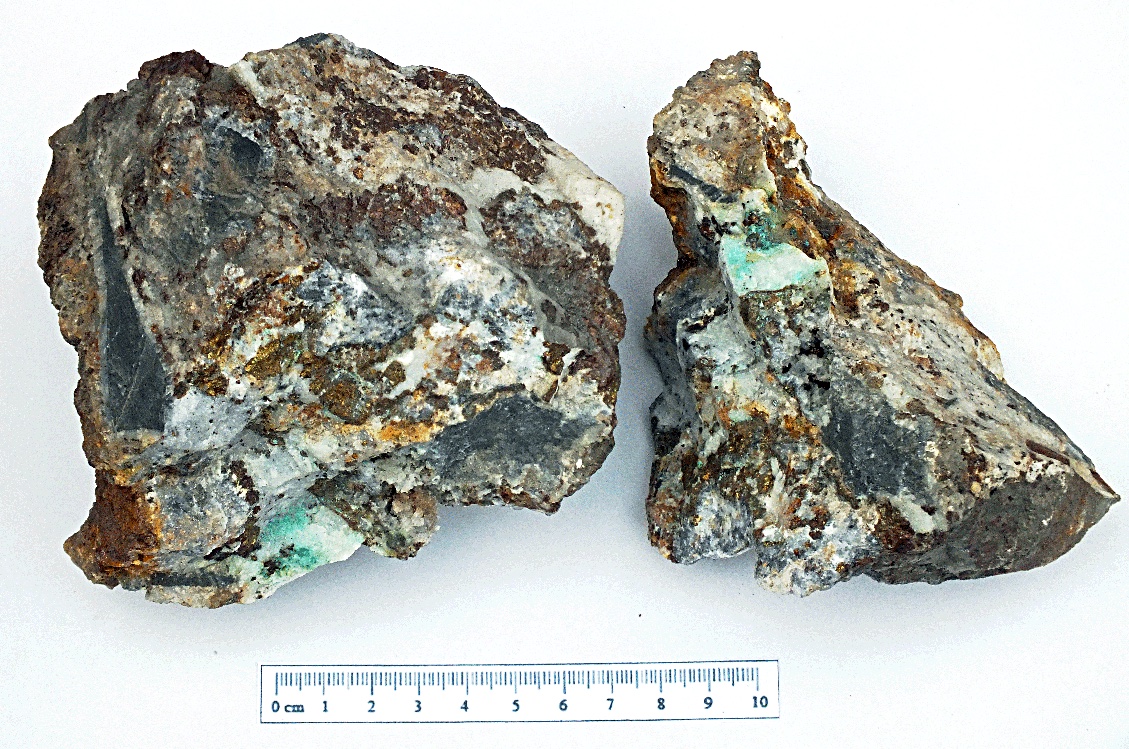
Baryte, Gorn mine. (CWO)
Baryte, Barium sulphate, BaSO4. Gorn mine, Nr Llanidloes, Central Wales Orefield. These specimens were collected from a sorting platform at the old mine workings. They are massive with some cavities containing platy crystals in the cockscomb formation. The larger specimen shows some witherite on the lower right hand side.



